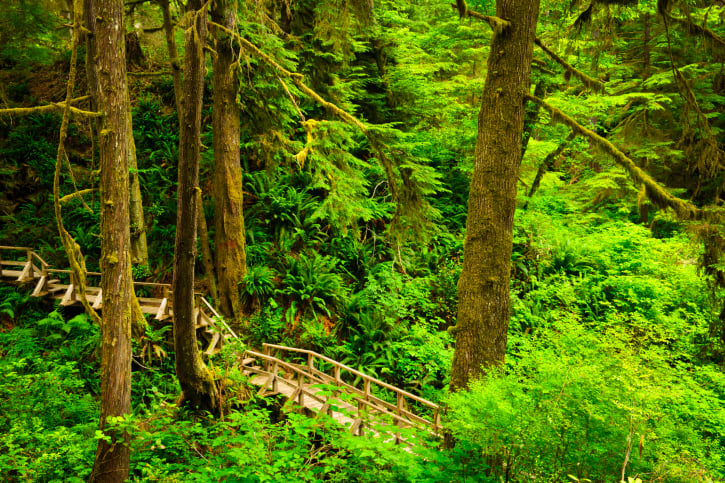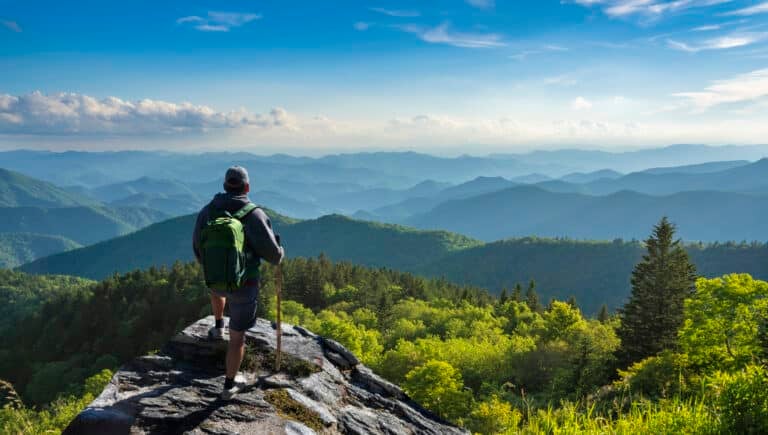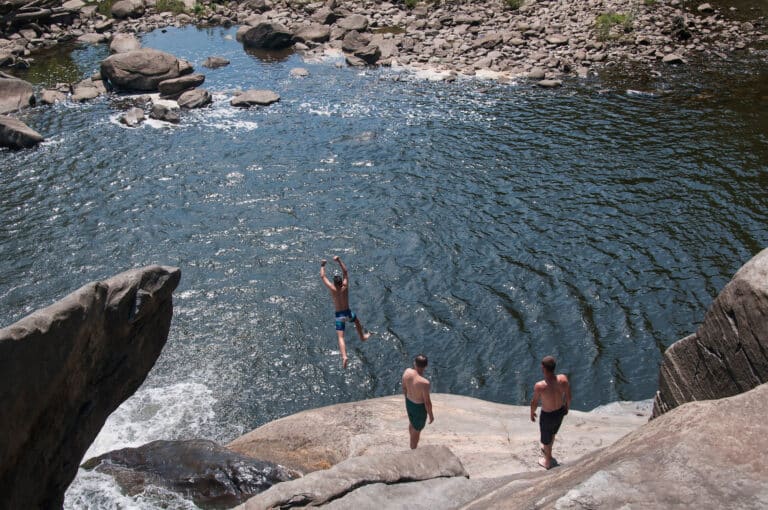In Japan, the term shinrin-yoku refers to the act of getting out and simply walking in the woods and breathing in—both metaphorically and actually—the healing aromas of the trees.
The term roughly translates as “forest bathing,” or, more romantically, as taking in the essence of the forest, walking quietly, aware.
Shinrin-yoku is not just some poetic Japanese ideal either (indeed, it was coined as a Forest Agency marketing term in the early 1980s)—it’s by some tokens based on the healing properties of actual protective odors, called phytoncides, exuded by the trees. It’s taken so seriously that the Japanese consider forest bathing an important way to combat the stress of our insidiously busy work world—in fact, a recent piece in Mother Earth News reported that Japanese researchers have proven that walks in the woods can actually lower cortisol, thus stress levels.
I certainly don’t do enough forest bathing anymore. It seems odd that I live right down the street from a trail that wanders into stands of ponderosa pine and sandstone covered in lichen, a place where bears and mountain lions and songbirds make their home. But I’m not up there forest bathing, soaking it in. When I do head into those woods, it’s to go for a trail run or walk the dog while checking work emails on my phone. It’s to power through, even if I do find a few mindful moments. I’m not saying that hard exercise and a focus on outdoor sports is bad (hey, it’s required where I live in Boulder, where everyone, as the great Kenny Powers once observed, “wants to be the best at exercise.”) But I do feel as if I am no longer tapping into simply enjoying the trails, the woods, the mountains for what they can bring to me.
That was not always the case. When I was still in my 20s, I spend six seasons in Montana’s Beaverhead-Deerlodge National Forest, building trails and fighting fires. It was, quite simply, the best job I have ever had in my life. Each day, we hiked, hauled big tools, worked the earth, went back to camp, cooked good food, drank clear water, read, slept under the stars… and often engaged in forest bathing.
After swinging a pulaski all day long, I would be pretty sated physically. I didn’t feel like I needed to go for a trail run or mountain bike ride or get in a damn workout. I would bathe in the forest, taking slow, silent walks into the secret places off the trail around our camp.
Things happened. Subtle things. Sometimes powerful things. Walking solo at twilight on the long, bare backbone of Shedhorn Ridge above stands of Douglas fir, I watched three hawks ride thermals up from the open air to circle above my head. On the way down, in the near dark, I heard elk running through the trees. Another time in the Gravelley Range, I watched as two coyotes harassed a doe in thick sagebrush. Walking later in almost the same spot, I suddenly came upon her fawn—small, pure, curled up in the high grass and shaking with fear. Other times I would just take in the, I don’t know, sense? Energy? Vibe? of these untouched parts of the Madison Range.
On days off, I would get out and hit it hard—climb, bike, hike to spring ski couloirs. Even in the midst of these quiet walks, I would sometimes push it—climb some small unnamed peak, break into a run—but it all stemmed from a desire to start walking and see where the forest took me. That mindset is what seems all too easy to lose when the woods are our playground.
I’m not saying we shouldn’t be out competing, exercising, pushing ourselves in our mountains. I actually think we can find these moments of deep connection when we are on our bike or in the rhythm of running or especially on a tough climb, but most of all when just bathing in it all. And sometimes we just need to walk quietly and see where it takes us. Most importantly, if we can reawaken that appreciation for the wild, we just may be able to save it.








